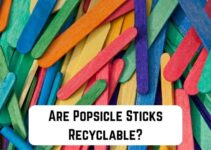You may downplay it all you want, but electricity is one thing that we can’t do without as humans. For decades, it has been crucial to development in every corner of the world. And yearly, new ways are being sought to develop how it is being generated.
Luckily, some decades ago, it was discovered that you can always generate electricity through the wind. This means of generating electricity is innovative and sustainable as there is no major problem caused for the environment (unlike the traditional means, which intricately involves the burning of fossil fuel and release of toxic fuel in the atmosphere).
This relatively new discovery resulted in the production and use of wind turbines made with heavy blades, which is the material used to generate electricity using the wind’s speed and direction. Without a doubt, many nations of the world, including America, have adopted this process and mass-produced wind turbines for generating electricity.
While this is good because of its sustainability in the environment, there is yet another issue on the environment that has been raised. And this is what would be the aftermath of the wind turbine blades. These wind turbine blades won’t last forever; they would need to be changed at a point. So, the question is, when this happens, what next?
This big question is what this post examines. Hence, we consider whether you can recycle wind turbine blades and if they are biodegradable. We also consider if wind turbine blades are toxic and whether they are piling up in the landfill. Lastly, we consider the lifespan of these blades and what other things you can do with them.
So, dive in and enjoy the post!
Can You Recycle Wind Turbine Blades?
Wind turbines have, over the years, been one of the easily favored materials in different countries. Practically, all nations of the world want a sustainable means of generating electricity for their citizens. And this means intricately involves the use of wind turbine blades. But then, these wind turbine blades won’t last forever. So, if they don’t, what happens to them next? Can you recycle them? Or you forget about them? Well, the answer to this question is what we provide in this segment.
As great as wind turbines are, their blades cannot be recycled. Yes, this looks like a betrayal already, but maybe if you know why this is so, you will think otherwise. Like usual, let us consider why this is so.
Ordinarily, wind turbines are made with metals that are recyclable in all ways. But the blades have a different material. The blades are made with fiberglass and some other composite materials. This is so that the wind turbine blades can be light-weighted for easy and smooth movement. While this state of things serves the purpose for which the wind turbine blades were created, recycling is a challenge.
For one, the composite materials make it impossible to recycle the wind turbine blades. This is because the separation of the different materials is quite difficult, and even if possible, it would require a lot of effort from the recycling company.
Aside from this, there is the problem of breaking down the wind turbine blades before recycling. If you have come across wind turbines before, you should be able to testify to how gigantic their blades are. On average, the length of a wind turbine blade is about fifty meters; this is almost the same as an average field in America. This alone poses a challenge of breaking the whole blade apart for recycling since the whole wind turbine blade cannot be put in the recycling machine.
But then, these wind turbine blades have been well-built to withstand the force of the wind. The implication of this is that even if it were recyclable, it would require a lot of effort and resources to break it apart. Also, since wind turbines are usually located far away from residential or commercial areas, there is the issue of transportation to worry about.
Something as huge as a wind turbine blades cannot be transported without getting special trucks. They would also need to be cut apart for easy transportation. To do this, you would require diamond wire saws or vehicle-mouthed wire saws. All these are not easy to come by or affordable. This makes it difficult for recycling stations to accept wind turbine blades for recycling.
Are Wind Turbine Blades Biodegradable?
Knowing whether wind turbine blades are biodegradable is important for everyone. Aside from the fact that the information is golden, it would also influence our stance with wind turbine blades and how fast we can, if necessary, find an alternative to wind turbine blades. But the question remains whether wind turbine blades are biodegradable.
The quick answer to this question is to say No. Generally, though, we can play to the gallery and say that everything is biodegradable. But to what extent would this be? We would need to consider the time it takes for wind turbine blades to break down before we arrive at a satisfactory answer.
For the most part, wind turbine blades are made of fiberglass and composite materials. If this were only the case, it would have been better. But if you consider the huge size of the wind turbine blades, then you might begin to have a change of mind. For something hugely built with fiberglass and composite materials, you can be sure that it takes a very long time before it decomposes, that is, even if it decomposes at all.
The chances are that all the wind turbine blades ever created would outlive this present generation and the next before they even begin to biodegrade. And, if you consider the fact that more and even bigger wind turbine blades are being built, you would realize that there’s still a long way to go for the environment.
So, as much as you might like the wind turbine blades, they are not recyclable, nor do they biodegrade in real-time.
Are Wind Turbine Blades Toxic?
You have read above that wind turbine blades are not recyclable and take an extremely long time before they biodegrade. Right now, you are probably wondering if that is all with the wind turbine blades or there could be still be an angle we have not considered.
Well, yes, there is. In this segment, we want to consider whether wind turbine blades are toxic. Knowing this would go a long way to influence how we will deal with the wind turbine blades and their effects on the environment.
So, to the big question, are wind turbine blades toxic?
Many people have argued that wind turbine blades may be toxic because of the materials used to make them. There is no problem with the fiberglass, but with the composite materials added to make the wind turbine blades. These composite materials often contain toxic plastics that are hazardous to the environment. Some of these plastics have Bisphenol A, a very hazardous chemical. In fact, in some parts of the world, plastics containing Bisphenol A have been banned from being used.
Aside from this, they are not recyclable and take extremely long years before they biodegrade, thereby getting toxic for the environment over time. This state of things makes wind turbine blades toxic- directly or indirectly- to the environment.
Are Wind Turbine Blades Piling Up In Landfills?
Often, before something can pile up in the landfill, they are of no reasonable use again and can’t be recycled. For wind turbine blades, it seems that they meet these conditions. Let’s explain what we mean.
Generally, after some years, wind turbine blades lose their use, and they are removed and replaced with new ones. Because of their size, they need to be cut into smaller pieces for flexible mobility. After this, there is often no other reasonable use that wind turbines are being subjected to. One might think that recycling should offer a glimmer option, but this is not the case. Wind turbine blades are often not accepted for recycling in many stations because of the materials they are made with.
This condition leaves people with no other option than to consider landfills. Choosing a landfill to dispose of wind turbine blades would have been better if the blades are easily broken down. These blades that have been made with fiberglass and composite materials in huge sizes remain in the landfill for a long time.
Some of these wind turbine blades are buried in some states to create space for other landfill materials. And, to make matters worse, not all landfills accept wind turbine blades for dumping. So, the few that accept only have the blades piling up in their landfills because they take extremely long years to biodegrade, and there is not much use you can put them to.
What Is The Lifespan Of A Wind Turbine Blade?
Wind turbine blades don’t last forever. Like every other thing, the blades also have their stretch limit. For an average wind turbine blade, it takes about twenty-five years for its durability.
Although this is a considerably long time, don’t be surprised that there are already more than a thousand wind turbine blades becoming useless every year in different parts of the world. Also, there could be some repowering, which could render the wind turbine blade useless. This is regardless of whether the blades have served their life span or not.
So, there it is. Wind turbine blades can last up to 25 years in the right condition. It could be less when there is an intervention of some planned or unexpected factors.
What To Do With Old Wind Turbine Blades?
Up till now, people are still confused about what they can do with old wind turbines. The problem is the same everywhere because it seems that the winds have been specially made for the purpose it serves. And given the huge size and trouble of transportation, people don’t consider it for any reasonable use. This is the reason it constantly piles up in the landfills.
The only reuse associated with it, which is not even popular, is grinding it and mixing it with cement for other uses. This, in itself, requires a lot of resources and energy before it is done. This is basically the reason people don’t consider the reuse.
Conclusion
Wind energy is a sustainable means of generating electricity but indirectly contributing negatively to the environment. While there is little we can do, we can only call for more sustainable production of the materials used for making wind turbine blades. If they can’t be recycled, at least, they should be biodegradable in a relatively short time.
References:






